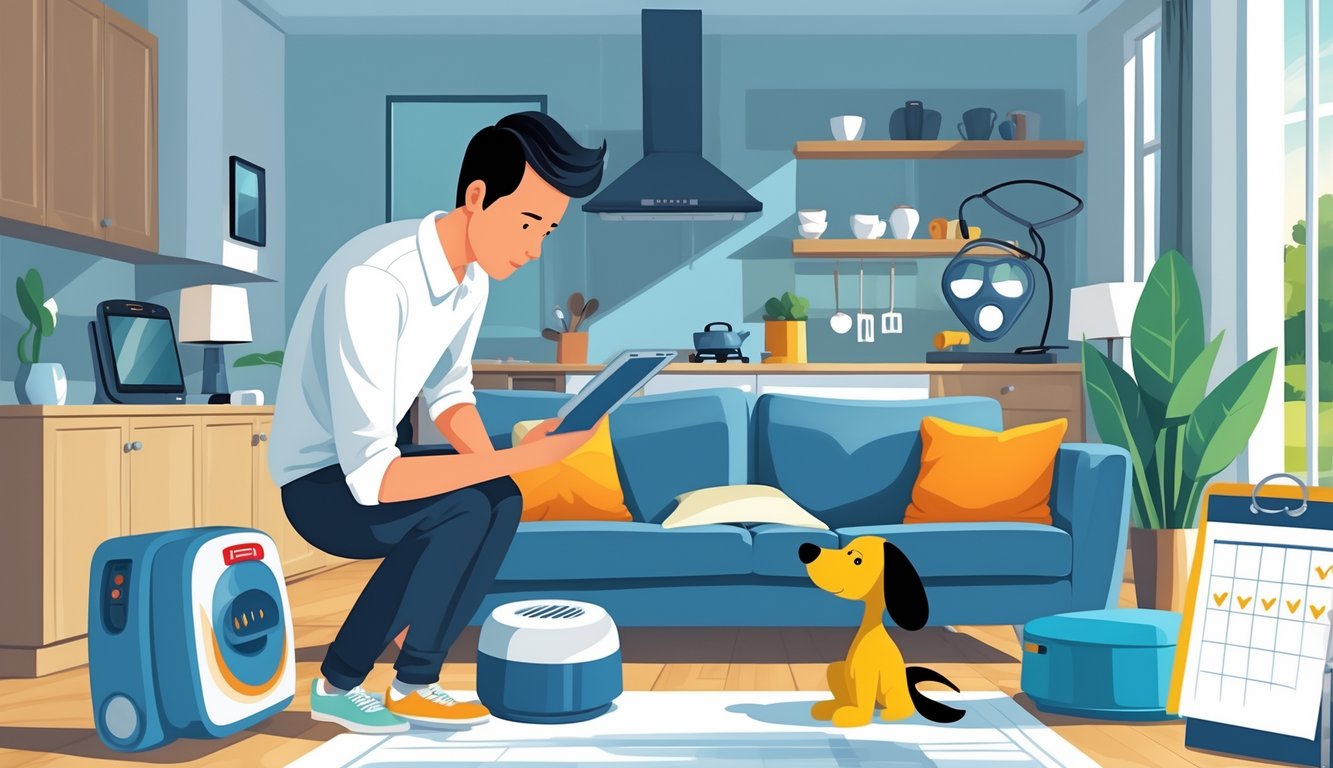
Registering Your Products for Alerts
Every time I open a new blender or window AC, there’s that stupid warranty card. I tried filling one out once—pen died halfway through, kid started crying, gave up. I always assumed those cards were just for junk mail. Turns out, if you actually register, you get direct alerts if your specific model gets recalled. Manufacturers are supposed to send you emails, or sometimes even texts, when something’s gone wrong. They don’t love doing it, but legally, they have to.
I finally started registering stuff online. Most brands bury the registration link somewhere in their FAQ, but once you find it, it’s just serial number, email, done. Last year I got an email about a coffee maker recall before anyone else was even talking about it. Saved me from having to explain why my kitchen smelled like melted plastic on Christmas.
There’s also stuff like RecallChek, which lets you track all your home appliances at once—they claim real people check it for accuracy, and it’ll warn you about even the weirdest gadgets. Probably overkill unless you’re running an Airbnb or inherited a house full of mystery appliances. Still, I don’t get why nobody ever talks about product registration, except in the fine print nobody reads.
Steps to Take If You Own a Recalled Product
Every time I hear about a recall, I get that “oh great, now what?” feeling. Should be simple, but somehow I end up cross-eyed, checking serial numbers on a blender that isn’t even the one sparking. Recalls come out of nowhere—batteries, baby monitors, even my neighbor’s ceiling fan got yanked last week. So I check, squint at some legal form, and wonder if I’m living next to a ticking IKEA time bomb or if I’m just being paranoid.
Contacting Manufacturers and Retailers
Contacting companies? Nightmare. Emails, chatbots, phone trees—none of it is smooth. You’re supposed to know the SKU, which, sure, let me just memorize that 12-digit code stamped in microscopic font. The CPSC says there were 323 recalls last year, and honestly, half my neighbors only found out by accident.
Last month, I called about a power tool recall and the rep literally said, “Hang on, let me Google that.” Seriously. Apparently, companies are supposed to send you written instructions—refund, repair, or replacement. If you don’t get anything, screenshot the recall notice for your records, because if they ask for proof of purchase, nobody’s got that faded receipt. And yeah, you can’t sell or give away recalled stuff, but good luck getting the company to act like they care. Sometimes they act like you’re telling them about a distant relative’s weird rash.
Returning or Repairing Defective Products
Ever tried returning a recalled air fryer to the store, only to be told to email photos and then ship it to Nebraska? It happens. Most recalls offer a refund, repair, or replacement, but don’t expect a pattern. Last December, I asked for a new smoke detector and got a coupon for something useless instead.
They might even tell you to destroy the product yourself. No, really—I once had to cut the cord off a lamp and send a photo of its corpse. Felt like I was in a dystopian movie. Don’t sell or donate your recalled stuff; it’s illegal, and you could get blamed if something goes wrong later. Keep every email, log every claim number, and follow up, because customer service will absolutely forget you exist. Sometimes returning to the manufacturer works better than the store, but not always. Documentation is your only hope when things get messy.
Preventive Measures for Homeowners
There’s never a good time to stop mid-renovation to check recall lists or dig through your inbox for some boring PDF. But honestly, I’ve picked up a few tricks because “being careful” doesn’t stop your kid from chewing on a recalled toy or the dryer from trying to start a fire at 3am.
Checking for Recent Recalls Before Updates
I’ve lost count of how many times I thought everything I bought was fine, then found out my “brand new” ceiling fan was recalled months ago. That’s why I keep the CPSC’s recall page on my phone. You don’t need to be a lawyer—just search for your appliance or toy. Those registration cards you toss? Fill them out if you can, that’s how you get a heads up before your product makes the news.
Weird thing—companies don’t shout about recalls. Some just quietly update a government database, no press release, no nothing. U.S. PIRG says there were 323 recalls last year, with over 15 deaths and 550 injuries. Not just “theoretical.” That’s people trusting the shelf at Target.
Maintaining a Safe Home Environment
Dusting isn’t just for show. I crawl behind the washer, check plugs, melting chargers, random phone cases with warnings I never read. I don’t remember every detail, but I’ve got the ConsumerSafety.org recall checklist taped to the fridge. If you’ve got kids, double-check anything with small parts or age labels—the recall list grows faster than my laundry pile.
I swap out smoke alarm batteries like it’s a religion, but that’s just the start. If I hear a weird click or smell something off, I look it up. Probably overkill, but after hearing from a contractor that “safe” outlets got recalled twice in five years, I’m not taking chances. I set calendar reminders twice a year for a safety sweep. Not perfect, but pretending recalls only happen to other people? Not my style.